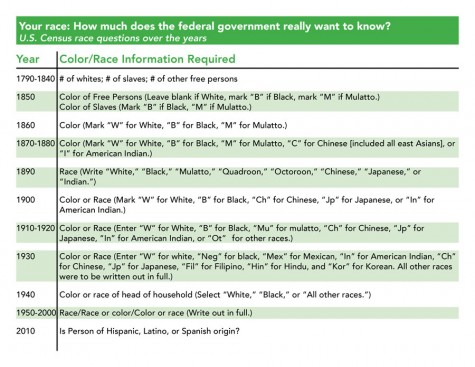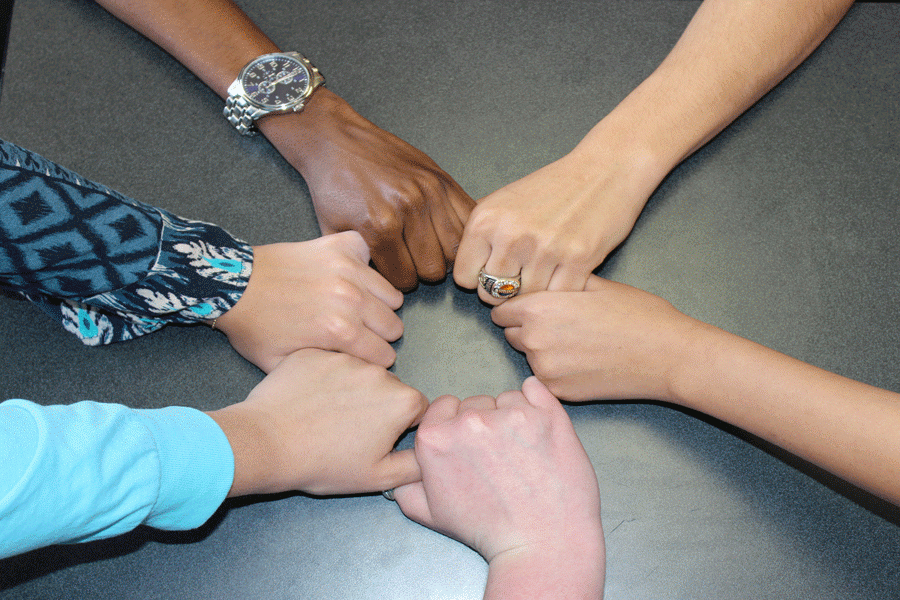In a World of Color, How Do You See Yourself?
January 29, 2016
Biracial (adj.): concerning or containing members of two racial groups
Multiracial (adj.): made up of or relating to people of several or many races
White. Black. Hispanic. Asian. Who are we? How do we see ourselves, and how does the U.S. government see us? Does it matter?
The U.S. Census first started allowing people to choose more than one race in 2000, and since then the number of people who are considered “multiracial” has grown tremendously, doubling from 2000 to 2010. According to the 2010 U.S. Census, 9 million (2.9 percent of the population) identified themselves as having two or more races.
These numbers are continuing to grow.
According to pewsocialtrends.org, the biracial population is growing at a rate three times as fast as the population as a whole. A survey by the Pew Research Center found that 60 percent of multiracial people were proud of their mixed-race background (69 percent).
Multiracial people cannot be easily categorized. According to Pew, when asked, multiracial people with a Black background were found to have experiences or social interactions more aligned with the Black community. With biracial White-Asians, it’s a little different. These people felt more aligned with Whites than Asians. With biracial White-American Indians, the largest group of multiracial people in the country, only 22 percent felt they had a lot in common with other Native-American peoples, and 61 percent felt they had more in common with Whites.
A person can be considered multiracial in three ways: One’s grandparents are multi/biracial, one’s parents are multi/biracial, or the individual identifies as multi/biracial.
The Census gives these options when asking about race: White, African American, American Indian, Asian, Native Hawaiian, or Alaska Native. (Hispanic and Latino are counted as ethnicities.)
We asked Santa Fe High freshman Liam Honey and Nanzee Lopez the following questions:
What is your racial make-up?
Nanzee: “I’m Caucasian and Cuban, so I guess I would be considered White and Hispanic. I know that I’m mixed with other races as well. But I’m not exactly sure what they are, so those are the main
ones.”
Liam: “I’m Irish and Guatemalan.”
Are there any challenges to being multi/biracial?
Nanzee: “Yes. Due to the fact that I appear White on the outside, nobody believes that I’m fluent in Spanish. I also struggled getting into a bilingual class because a counselor also believed that I was white.”
Liam: “Not that I’ve experienced.”
Are there any advantages to being multi/biracial?
Nanzee: “I often enjoy surprising people by helping translate, mostly because of the shocked looks on their faces. Also, the ability to brag despite my outside appearance.”
Liam: “There are many. Often on enrollment forms there aren’t any races I identify with and are often lacking another option.”
Do you think being multi/biracial has made you more open to other cultures?
Nanzee: “I feel like even if I wasn’t biracial, I’d still be curious or open to cultures that I’m not a part of.”
Liam: “Most definitely. Being biracial has made it easier to understand the struggles other races encounter.”
Have you been subjected to racial slurs or jokes?
Nanzee: “Not really, for the most part. However, I have heard that people were surprised ‘the white girl’ can speak Spanish that good. But I usually don’t let that bother me.”
Liam: “Yes, I have been called the ‘N’ word multiple times.”
According to huffingtonpost.com, by 2060, Whites will no longer be the majority. Multiracial people in the United States are projected to more than triple, from 7.5 million to 26.7 million, making race labels increasing irrelevant.
